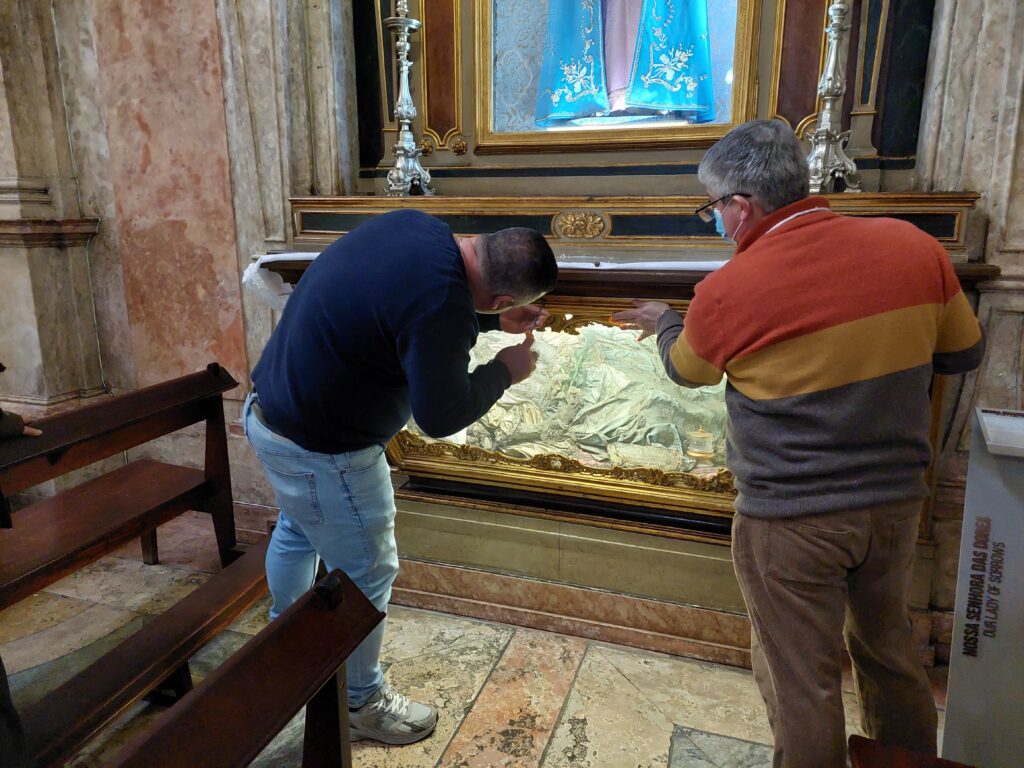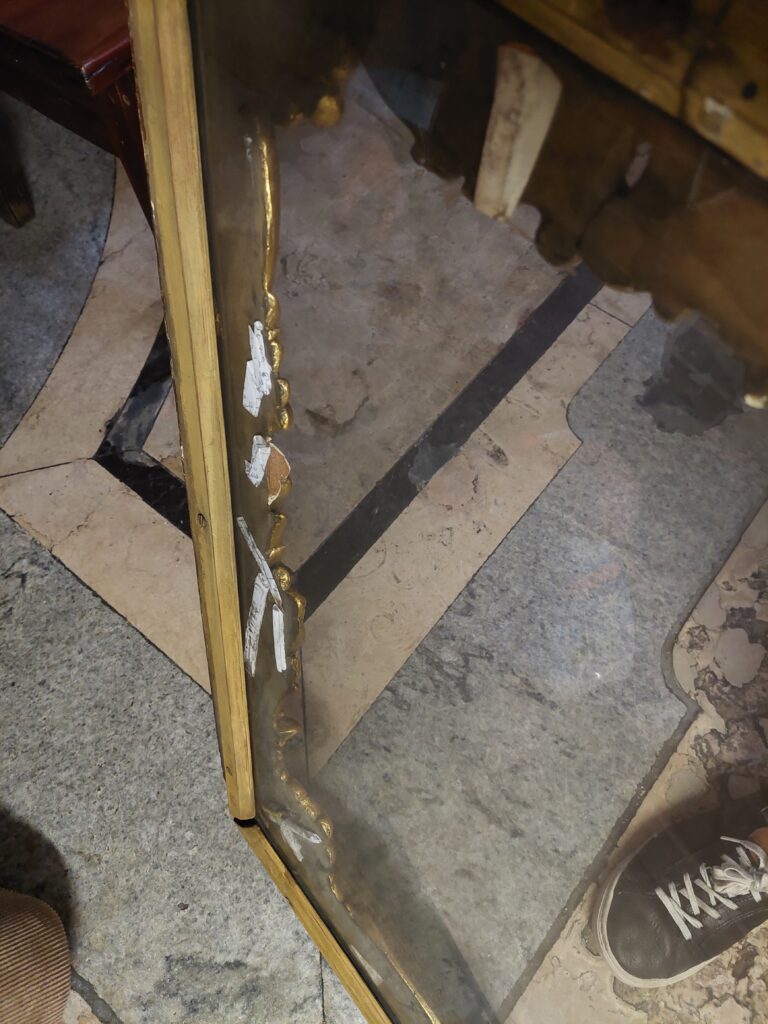St Justina
Housed within a side altar dedicated to Our Lady of Sorrows, on the Epistle side of the Igreja de St António in Lisbon, the simulacrum of St Justina is a remarkable example of the devotional practices that once marked Catholic Europe.
This simulacrum is believed to be one of two simulacra sent from Rome to Lisbon in September 1777, a gift from Pope Pius VI. While the whereabouts of the second body remains unknown — it was reportedly placed in the Palácio da Bemposta — the simulacrum of St Justina continues to be venerated in its original context.
Although the original vase sanguinis is lost, the current vessel replacement contains remnants of the original one. A delicate paper label next to the body reads
“SAC. CORPUS. CVM. VASE / SANGUINIS S. IUSTINÆ / Me Cœmeterio Sancti / Laurentij”
(“Sacred body with a vessel of blood of St Justina, from the Cemetery of St Lawrence”)
In 1994, the simulacrum underwent conservation treatment, and in February 2024, the urn was opened once again to allow for 3D documentation — part of a wider effort to record and preserve these rare sacred artefacts.
Still today, visitors and devotees leave handwritten prayers inside the small openings on the altar’s glass front, quietly appealing to St Justina’s intercession. Yet this intimate gesture remains far more discreet when compared to the vibrant devotional practices surrounding the famous image of St António, which faces it from the opposite altar.


